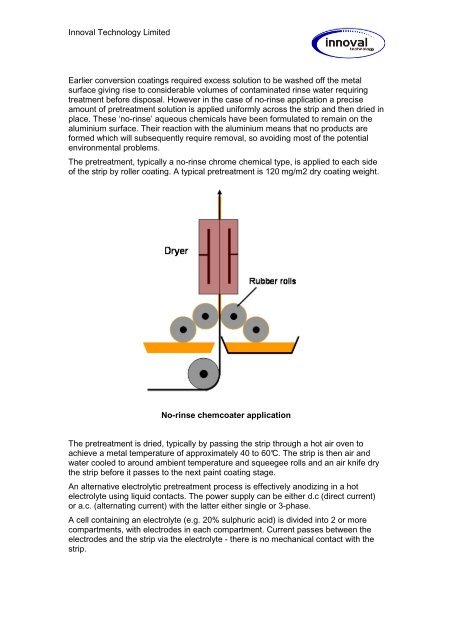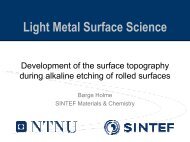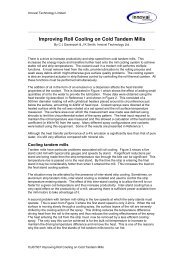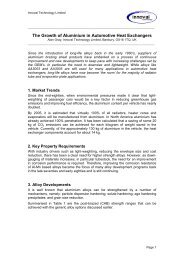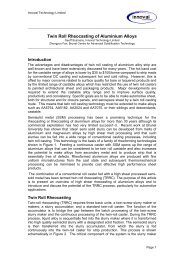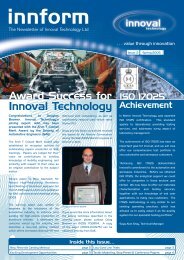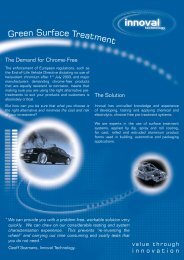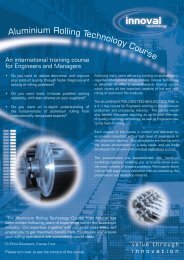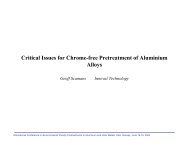Pretreatment of Aluminium â An Overview - Innoval Technology Ltd
Pretreatment of Aluminium â An Overview - Innoval Technology Ltd
Pretreatment of Aluminium â An Overview - Innoval Technology Ltd
You also want an ePaper? Increase the reach of your titles
YUMPU automatically turns print PDFs into web optimized ePapers that Google loves.
<strong>Innoval</strong> <strong>Technology</strong> Limited<br />
Earlier conversion coatings required excess solution to be washed <strong>of</strong>f the metal<br />
surface giving rise to considerable volumes <strong>of</strong> contaminated rinse water requiring<br />
treatment before disposal. However in the case <strong>of</strong> no-rinse application a precise<br />
amount <strong>of</strong> pretreatment solution is applied uniformly across the strip and then dried in<br />
place. These ‘no-rinse’ aqueous chemicals have been formulated to remain on the<br />
aluminium surface. Their reaction with the aluminium means that no products are<br />
formed which will subsequently require removal, so avoiding most <strong>of</strong> the potential<br />
environmental problems.<br />
The pretreatment, typically a no-rinse chrome chemical type, is applied to each side<br />
<strong>of</strong> the strip by roller coating. A typical pretreatment is 120 mg/m2 dry coating weight.<br />
No-rinse chemcoater application<br />
The pretreatment is dried, typically by passing the strip through a hot air oven to<br />
achieve a metal temperature <strong>of</strong> approximately 40 to 60°C. The strip is then air and<br />
water cooled to around ambient temperature and squeegee rolls and an air knife dry<br />
the strip before it passes to the next paint coating stage.<br />
<strong>An</strong> alternative electrolytic pretreatment process is effectively anodizing in a hot<br />
electrolyte using liquid contacts. The power supply can be either d.c (direct current)<br />
or a.c. (alternating current) with the latter either single or 3-phase.<br />
A cell containing an electrolyte (e.g. 20% sulphuric acid) is divided into 2 or more<br />
compartments, with electrodes in each compartment. Current passes between the<br />
electrodes and the strip via the electrolyte - there is no mechanical contact with the<br />
strip.


